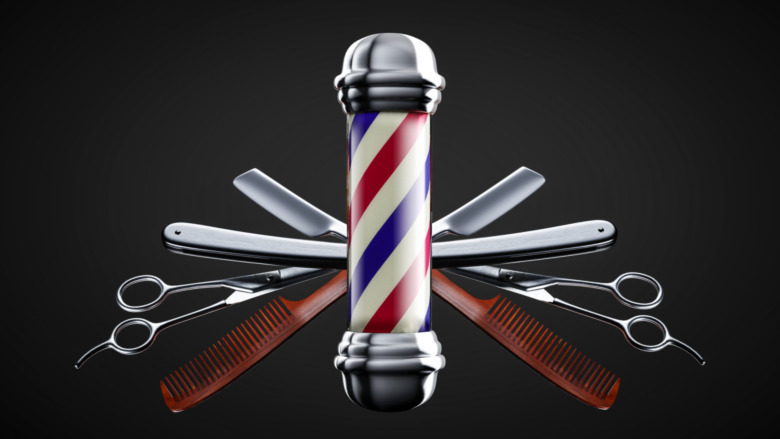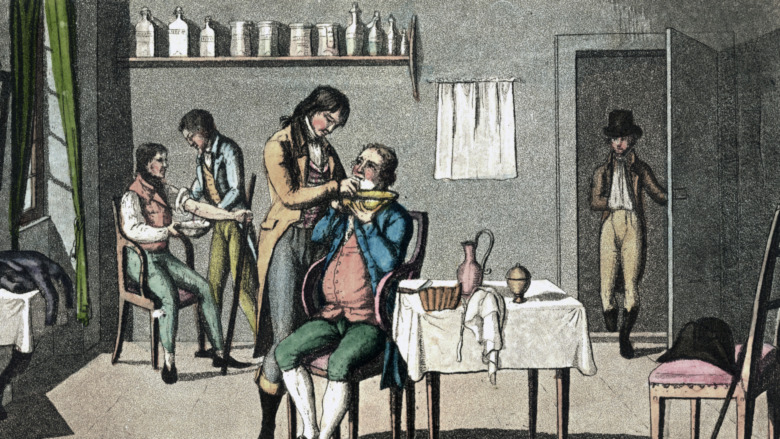The Dark History Of The Barbershop
The act of barbering has been around since 5000 BCE, when members of the ancient Egyptian nobility used sharpened oyster shells and flint as crude instruments for grooming, according to the National Barber Museum. But fast forward to Europe circa 900 CE and a barber's skills with sharp tools had evolved, making barbers the go-to guys for the surgical needs of the Dark-Ages crowd, because hey, if you are qualified to shave a beard, you can certainly open up bodies and tinker around.
According to the Barber-Surgeons Guild, barbers stepped into the world of surgery thanks to the needs of monks, who were required to keep closely shaved heads, so they had a lot of barber visits. The monks taught barbers the process of bloodletting, or cutting a vein to release blood in an effort to cure an ailment, a popular treatment for many conditions that was practiced for centuries, per the British Columbia Medical Journal.
The American Dental Association (ADA) reported that somewhere in between the years 1130-1163 rules were changed, prohibiting monks from doing any bloodletting, surgeries or tooth extraction, so that work fell on the shoulders of barbers, who became known as barber-surgeons.
According to the National Barber Museum it went on like that for 400 years, with the same men tasked to cut and style hair also being tasked to do the important work of bloodletting, dentistry, and tending to the surgical needs resulting from the battlefield.
The days of barbers doing surgery is still symbolized at barbershops
According to the Barber-Surgeons Guild, it was precisely because barbers were so skillful with scissors and razors and the like that they were designated to do surgeries, something standard physicians were unwilling to do.
Yet distinctions were made between barbers and surgeons over time, and eventually barber-surgeons were ordered to stick to doing shaves, cutting hair, bloodletting, cupping, leeching, and pulling teeth, whereas those with actual surgical training and education were to do the more complex operations, the ADA reported. Still, according to the Barbershop Museum, it wasn't until 1775 that a bill was passed that officially separated barbers from surgeons, and it was then that barbers started using the iconic barber pole to separate and identify themselves.
According to History, the reason for today's barber pole colors harkens back to those bloody days at the barbershop. In Europe a barber pole is red and white. The red is symbolic of bloodletting and the white is symbolic of the bandages used by barber-surgeons to stop the bleeding. The pole itself is said to represent a pole-like object the patient would squeeze so the barber-surgeon could more easily find the vein.
In the U.S., blue was added to the barber pole's color pattern. According to History there are a couple of theories on that. One is that the blue is symbolic of the vein that was cut to release blood; another is that the blue, added to the red and white, is a show of patriotism.

